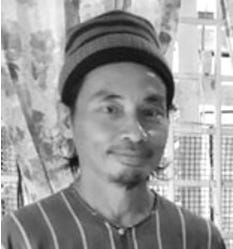Islamic Economics Series: Adi Setia Part 4
THE CONCEPT & INSTITUTION OF BAYT AL-MĀL (HOUSE OF WEALTH)
I am publishing a series of articles written by the renowned Islamic scholar Adi Setia. There is so much talk about steering government towards an Islamic state. However, what is lacking is discussion about Islamic economics.
To encourage more understanding and interest in Islamic economics this series will be posted.
»»»»»»»»
The arabo-Islamic term, bayt al-māl, literally means “house of wealth.” The “house” refers to the institution of the public treasury of the caliphal government. This public treasury—as place and institution—was where the wealth (in the form of money or in kind) was stored and then mobilised for eventual recirculation and redistribution into society as a whole. The “wealth” here refers to the economic surplus of the country collected by the central or provincial government and stored in the public treasury.
The sources of wealth of the bayt al-mal were diverse and many: obligatory alms (zakat), gifts (hibah), war booty (ghanimah, fayʾ), land tax (kharaj), poll tax (jizyah), endowments (waqf), custom duties, etc. This public wealth was then mobilized for recirculation and redistribution into the general population in the form of public expenditure such as for paying salaries of various government functionaries, maintaining the army, paying pensions, spending on poverty alleviation, funding public infrastructure and strengthening the defences of the country like forts and border outposts.
From the above very brief description of the functions of the institution of bayt al-mal qua public treasury, we can re-conceptualize it in general terms as a system or an invisible structure for mobilizing the economic surplus of a population for reinvestment back into the population as a whole in order to secure its prosperity and well-being. The population (or people impacted, Muslims and non-Muslims) here can be at the level of the state or country, or it can be at the level of the community, or a cooperative enterprise (like a guild or benefit company) or even the extended family structure.
The governing idea in this general reconceptualization of bayt al-mal is derived from the empirical observation that in any community under normal peaceful circumstances (i.e., one that is not seriously impacted by natural or man-made disasters)—however seemingly impoverished economically—there are always those who are in poverty (materially speaking) and those who are in relative prosperity. A very few have much more than enough, a few have just a bit more than enough, many have just enough and the rest have less than enough (kifayah).
In this normal, typical peaceful community circumstance, the economic surplus of the relatively prosperous can and should be mobilized for strategic reinvestment into poverty alleviation. Through this proactive, strategic and carefully structured intervention in wealth recirculation, the poor and destitute can then work to uplift themselves socio-economically and, in turn, soon become themselves proactive contributors to the general well-being of the community.
In this regard, the community socio-economic work of the Baitul Mal wat-Tamwil (BMT)—literally, house of wealth & investment—cooperative movement in Indonesia is very significant. The BMT, as exemplified in TAMZIS, Yogyakarta, has successfully revived in a very creative and constructive manner the traditional concept and instituion of bayt al-mal such that it can again function as a system of mobilizing the economic surplus of the community for strategic reinvestment into establishing diverse ethical enterprises and wholesome industries for enhancing and securing the socio-economic well-being of the people of the community.
We can all envision the bayt al-mal as an “invisible structure” (a very useful social permaculture term) for the systematic mobilization and recirculation of socio-economic surplus through all strata of society, so that none is left out, and everyone can live and thrive in pursuit of a fulfilled, meaningful life of dignity, purpose and well-being.
In conclusion, we can say that the bayt al-mal in respect of the human community is like the heart in respect of the human body: the one recirculates wealth and the other blood to ensure survival, health and well-being.
Dr Adi Setia
Dr Adi Setia is currently Director, Institute for Regenerative Livelihoods (IRL), www.irleconomy.org
He was formerly Associate Professor of Islamic Science and Islamic Economics at the Center for Advanced Studies on Islam, Science & Civilization (CASIS), University of Technology Malaysia (UTM).
Subscribe Below:



The article shows why Islam is not at all suited to Bolehland.
Bolehland has plenty of those wide between the ears who hardly understand Islam but think they do. The game is to sound "with it" and to lord it over each other monkey and others.
The Allamighty says to hang around until there comes messengers who will teach the Word in the language of the land. Till now, none has appeared in Bolehland to teach in our blessed pidgin. Check your scriptures and see for yourselves. Try not to do it in Arabic, my Arab friends all say you monkeys are hopeless in that.
So why are our ignorant monkeys so impatient and itchy in their backsides, can't wait to make a big mess of their rubbish grasp of Arabic?
We've already made a big fcuking unholy haram mess of "Islamic banking", wtf!
What is the point of having such high sounding theories. Malaysia's twin precepts trumps all these theories. The NEP and Ketuanan policies will put money in the pockets of malay muslim elites. That is the ultimate and only aim of having Islamic economic policies. This professor is for show only.